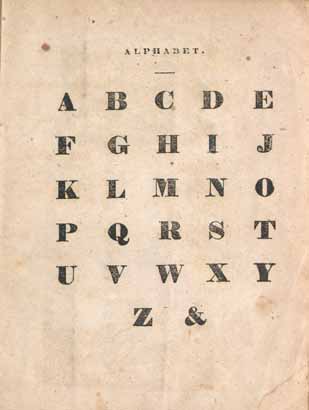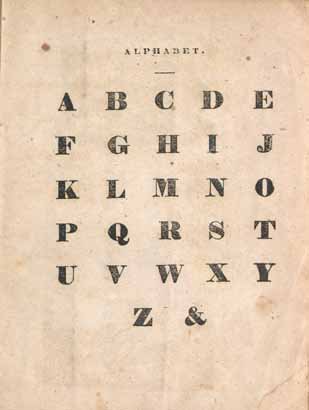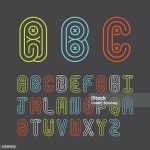There are 26 letters in the alphabet, starting with the letter ‘a’ and ending with the letter ‘z’. The English alphabet consists of 26 letters, from ‘a’ to ‘z’.
These letters are always written in the same order, known as alphabetical order. The alphabet is used to form words and sentences in the English language. Each letter has its own unique sound and can be combined with others to create various sounds and meanings.
Understanding the alphabet is essential for learning how to read, write, and communicate effectively in English. Additionally, the alphabet is often used as a foundation for organizing information, such as in dictionaries or directories. Knowing the number of letters in the alphabet is a fundamental aspect of language knowledge.
History Of The Alphabet
The history of the alphabet dates back thousands of years. It is believed that the first alphabets developed in ancient civilizations such as Sumer, Egypt, and Phoenicia. These early alphabets consisted of a set of symbols that represented sounds rather than complete words. Over time, alphabets evolved and became more standardized. The Latin alphabet, which originated from the Etruscan script and was adapted by the Romans, had a significant impact on modern English. It consists of 26 letters, with each letter representing a specific sound. The Latin alphabet is widely used in various languages around the world, including English. Today, the English language is written using the English alphabet, which includes both capital and small letters. Each letter has a unique shape and can be combined to form words and sentences. Understanding the history and evolution of alphabets provides valuable insights into the development of written language and its impact on communication.
The English Alphabet
| Letter | Name | Pronunciation |
|---|---|---|
| A | ay | /eɪ/ |
| B | bee | /biː/ |
| C | see | /siː/ |
| D | dee | /diː/ |
| E | ee | /iː/ |
| F | ef | /ɛf/ |
| G | gee | /dʒiː/ |
| H | aych | /eɪtʃ/ |
| I | eye | /aɪ/ |
| J | jay | /dʒeɪ/ |
| K | kay | /keɪ/ |
| L | el | /ɛl/ |
| M | em | /ɛm/ |
| N | en | /ɛn/ |
| O | oh | /oʊ/ |
| P | pee | /piː/ |
| Q | cue | /kjuː/ |
| R | ar | /ɑːr/ |
| S | ess | /ɛs/ |
| T | tee | /tiː/ |
| U | you | /juː/ |
| V | vee | /viː/ |
| W | double u | /ˈdʌbəljuː/ |
| X | ex | /ɛks/ |
| Y | wye | /waɪ/ |
| Z | zee | /ziː/ |
The English alphabet consists of 26 letters. Each letter has a specific name and pronunciation. The names of the letters in the English alphabet are as follows:
A – ay
B – bee
C – see
D – dee
E – ee
F – ef
G – gee
H – aych
I – eye
J – jay
K – kay
L – el
M – em
N – en
O – oh
P – pee
Q – cue
R – ar
S – ess
T – tee
U – you
V – vee
W – double u
X – ex
Y – wye
Z – zee
The pronunciation guide for each letter is also provided in phonetic notation. It’s important to note that capital and small letters differ in appearance but have the same names and pronunciations. Understanding the English alphabet and its letters is essential for reading, writing, and communication.
Punctuation Marks Within Words
The English alphabet consists of 26 letters, starting with ‘A’ and ending with ‘Z’. These letters are arranged in alphabetical order and are used to form words and sentences. Punctuation marks are essential in indicating breaks, pauses, and emphasis within words.
Punctuation marks within words can be a crucial aspect of understanding the English alphabet. These marks serve different purposes, such as indicating possessive forms or abbreviations. For example, the word “don’t” includes an apostrophe to denote the contraction of “do not”. Similarly, “I’m” uses an apostrophe to indicate the contraction of “I am”. Another instance is the word “e-mail”, which includes a hyphen to connect the two parts. Understanding these punctuation marks and their usage within words is important in maintaining the correct alphabetical order. Examples of words with punctuation marks within them include “can’t”, “won’t”, “shouldn’t”, and “wouldn’t”. Recognizing and utilizing these punctuation marks properly allows for clear and coherent communication.Alphabetical Order
| Alphabetical Order |
| Definition of alphabetical order |
Alphabetical order refers to the arrangement of items, such as letters, words, or names, in the order of the letters of the alphabet. It is a fundamental way of organizing information to make it easier to find and navigate. In the English language, the alphabet has 26 letters, ranging from A to Z. The alphabet is always written and understood in the same order, starting with A and ending with Z. A key aspect of alphabetical order is that it remains consistent regardless of the context or purpose. |
| Common scenarios where alphabetical order is used |
|
| Tips for using alphabetical order effectively |
|
Unique Characteristics Of The English Alphabet
|
The English alphabet consists of 26 letters. From the first letter “a” to the last letter “z,” these letters are arranged in a specific order known as alphabetical order. This order is used consistently in English writing and is considered a notable feature of the alphabet. When comparing the English alphabet to other alphabets like Polish or Filipino, there are some differences in the letters used. These differences can be seen in the letter names and the inclusion of punctuation marks within words. Each alphabet also has its unique history and cultural significance. In English, we use both capital and small letters to represent the alphabet. This allows for distinction and variety in written communication. For example, the letter “o” is the 15th letter in the English alphabet. Whether capitalized or lowercase, it holds its position as the letter representing the sound “o.” |

Credit: ylhsthewrangler.com
Frequently Asked Questions For How Letter Are In The Alphabet
What Is The 27th Letter In The Alphabet?
The 27th letter in the alphabet is not a letter. The English alphabet consists of 26 letters, from A to Z.
What Is The 32 Letter Alphabet?
The 32-letter alphabet is not a standard or widely recognized alphabet. The English alphabet consists of 26 letters and is written in alphabetical order from A to Z.
What Is The 28 Letter Alphabet?
The 28-letter alphabet is a unique system that includes all the letters from A to Z in both capital and small forms. It follows the standard alphabetical order and is commonly referred to as “alphabetical order. “
What Is A To Z Called?
The English alphabet is called the “A to Z” alphabet. It consists of 26 letters, starting with “a” and ending with “z,” and is always written in the same order. This order is known as “alphabetical order. “
Conclusion
The English alphabet consists of 26 letters, starting with the letter “a” and ending with the letter “z”. These letters are always written in the same order, known as “alphabetical order”. Understanding the number of letters in the alphabet is essential for learning to read, write, and communicate effectively in English.
By mastering the alphabet, one gains the fundamental building blocks for language and literacy. So whether you’re a beginner or a language enthusiast, embrace the beauty of the English alphabet and let it guide you towards better communication.








